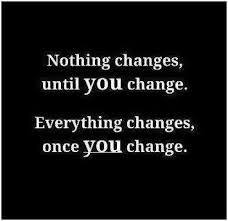Goals to Cheer About
The beginning of summer is incredibly busy for any mom- cheer or not! We spend so much time and energy wrapping up the end of the school year, planning trips and activities for the summer, and shuffling various sports schedules around the calendar.
At this point, we sit down for a moment donning our sunscreen before we head out for another soccer game or t-ball practice and think- where did this school year go? Then we ponder on a moment of reflection, and for the first time all year sit completely un-distracted and enjoy everything we have experienced in the last 365 days. What a rush!
Once our moment of year-long nostalgia is over, we feel the pressure to improve, make the most of the warm and sticky weather we have before us, and thus we begin to brainstorm our summer goals while digging for soccer cleats and sunglasses. Should I lose some weight? Or Should I finally give up the soda pop that is over taking the blood in my veins? I have been meaning to go to a Varicose Vein Treatment Specialist for quite some time. My doctor told me to go see one to help with my circulation, but I haven’t gotten around to it. There are other healthy things I could do while I’m at it, like perhaps spend more time outdoors, or kick my Starbucks habit. I could put more in the bank, or treat myself something I’ve always wanted? The possibilities are endless.
How exactly does one make a solid goal and successfully accomplish it?
 What if we start today by setting some attainable GOALS in our lives? We watch our cheerleaders bust it out, day after day in the gym; hours of practice and dedication with amazing end results. Putting on my coach hat for a minute. Much of the success for these athletes is through motivation and dedication toward reaching a goal. As coaches, we help our athletes set individual goals and team goals throughout the year- short term and long term. It’s imperative to have something to be working toward achieving at all times, otherwise the fire burns out without that fuel to keep it alive.
What if we start today by setting some attainable GOALS in our lives? We watch our cheerleaders bust it out, day after day in the gym; hours of practice and dedication with amazing end results. Putting on my coach hat for a minute. Much of the success for these athletes is through motivation and dedication toward reaching a goal. As coaches, we help our athletes set individual goals and team goals throughout the year- short term and long term. It’s imperative to have something to be working toward achieving at all times, otherwise the fire burns out without that fuel to keep it alive.
How can cheer moms/dads apply that same principle to their lives?
I recommend the SMART method.
Goals should be:
- Specific.
- Measurable.
- Attainable.
- Relevant.
- Time Bound.
Set Specific Goals
Your goal must be clear and well defined. Vague or generalized goals are unhelpful because they don’t provide sufficient direction. Remember, you need goals to show you the way. Make it as easy as you can to get where you want to go by defining precisely where you want to end up.
Set Measurable Goals
Include precise amounts, dates, and so on in your goals so you can measure your degree of success. If your goal is simply defined as “To reduce expenses” how will you know when you have been successful? In one month’s time if you have a 1 percent reduction or in two years’ time when you have a 10 percent reduction? Without a way to measure your success you miss out on the celebration that comes with knowing you have actually achieved something.
Set Attainable Goals
Make sure that it’s possible to achieve the goals you set. If you set a goal that you have no hope of achieving, you will only demoralize yourself and erode your confidence.
However, resist the urge to set goals that are too easy. Accomplishing a goal that you didn’t have to work hard for can be anticlimactic at best, and can also make you fear setting future goals that carry a risk of non-achievement. By setting realistic yet challenging goals, you hit the balance you need. These are the types of goals that require you to “raise the bar” and they bring the greatest personal satisfaction.
Set Relevant Goals
Goals should be relevant to the direction you want your life and career to take. By keeping goals aligned with this, you’ll develop the focus you need to get ahead and do what you want. Set widely scattered and inconsistent goals, and you’ll fritter your time – and your life – away.
Set Time-Bound Goals
– See more at: http://www.mindtools.com/pages/article/newHTE_90.htm#sthash.qRoJEU75.dpuf
The most important part of being successful in reaching your goals is planning and breaking down your goals into smaller short term goals. One of my favorite articles on this is ‘Turning Goals into Actions’ by Dr Charles R. Hall. This article is pretty lengthy, but well worth the time invested to get you off to a start to making little achievements each day to lead to fulfilling your ultimate goals.
“People don’t plan to fail, they just fail to plan.” In a survey of 1,100 executives, more than 80 percent said they were dissatisfied with their career progress and level of effectiveness. Why? They lacked the planning skills to aim for and achieve reasonable, attainable goals.
Planning is central to the attainment of all goals. It’s true for short-term, medium-term, and long-term goals, as well as those of either a personal or professional development nature. And, needless to say, an individual’s effectiveness at planning often has great impact on that individual’s effectiveness at achieving goals.
But despite the importance of planning, many managers shy away from it, believing it requires too much time. (And yet, somewhat ironically, these same managers are often the ones called upon to help create five-year plans for their companies!) Planning does take some time, but it needn’t be excessive if approached correctly. In fact, when done effectively, planning represents time well spent in that the “benefits” well exceed the “costs”.
Perhaps some common misconceptions of what a plan is and what it does have caused many people to shy away from the planning process. First, planning is not deciding each step in detail in advance and then blindly following through. Nor is it taking a leisurely stroll through the mind in hopes of coming up with a loosely connected stream of thoughts.
Good planning lies somewhere in between these extremes. What’s more, a good plan should be looked on as a means for achieving goals, not as an end in itself. As Eisenhower once put it, “Plans are nothing, but planning is everything”. While it’s impossible to completely avoid crises and unexpected events either in business or in your personal life, you should still try to plan as much as you can. Good planning pays off by creating direction, excitement, and motivation. It also increases your ability to manage those around you.
Turning Goals Into Action
A key consideration in effective planning is learning how to transform goals into attainable steps (actions). Many businesspeople have trouble with this; consequently, many of their goals (especially long-term goals) may never get addressed adequately (or at all).
However, there is hope. By developing effective monthly, weekly and daily plans, businesspeople can more clearly see the attainable steps needed to fulfill their goals. And there are several approaches that can be used for this. One simple four-step method for converting goals into actions includes:
- Pinpoint intermediate “target” to hit.
- Decide on tangible measures to identify when each “target” has been reached.
- Create a plan to reach those tangible measures.
- Break the plan down into daily actions.
A similar way to transform goals into a workable plan of action is with “planning inventory.” First, list five major goals you’d like to achieve in your lifetime either regarding your business or personal life. Select the goal you’d like to achieve first. Next, identify the steps you must take to reach that goal, moving in chronological order. Finally, break down the first step into one-day tasks you can accomplish. Subsequent steps can be used to develop subsequent daily plans.
What you can realistically hope to attain each day is a matter for your own judgment. But you can make it easier by regularly referring to your planning inventory, and carefully assessing the tasks that go into the steps needed for achieving each goal. In a sense, these steps are interim targets, and they provide a good measure of your progress.
The Planning Process
The more often you plan, the better and more comprehensive those plans will become. As much as possible, try to integrate your short-term,, medium-term, and long-term goals. The following process, which details planning at all levels, can help bring all those goals together.
Step 1: Yearly planning. The best way to find time for important but easy-to-delay tasks is to include those chores in your annual “time budget”. Start by making a yearly plan that includes the long-range projects enough time so that you can make steady progress toward completing them. Then assign specific dates so you know when to work on these projects, what you will accomplish each time you work on them and how much time you’ll need. Mark those target dates in your calendar, and don’t break them! Keep the plan close at hand so you can easily check your rate of progress.
Step 2: Monthly planning. At the end of each month, take an hour to decide what you want to accomplish over the next month. Decide on plans for reaching those goals on a week-to-week basis. Include items from your list of long-range goals.
Step 3: Weekly planning. Every week, decide and list what tasks you want to accomplish; the priorities for each task; ant the time, effort and materials required to complete each task. Once a week (Friday is best), select the goals for the following week, and work up a plan for reaching those goals. Break the upcoming week’s goals down into lists of daily objectives, and detail these objectives on daily “to do” lists.
Step 4: Daily planning. Use the same procedure you used for weekly planning to sketch out each day. Start on the highest-priority task, working at it until you have finished it or can’t go any further. Then move on to the task with the next-highest priority. Be sure to leave 25-50 percent of you day unscheduled. Unexpected tasks or emergencies may arise that require you immediate attention. These types of top-priority tasks generally can’t be put off.
Many types of planning aids are available to help keep you on course. In addition, they can often help you manage an abundance of other information. Examples include pocket planning books, electronic planners, computer programs, simple “to do” lists and wall charts.
Rather than going overboard and buying the whole nine yards, you should examine each of these options carefully. Then choose the one that best fits your needs. Some people are happy with traditional pocket diaries, while others swear by the new electronic time management gadgets. Businesspeople who spend much time in their offices often opt for time management programs they can use on their computers. In any event, pick a planner based on your needs, and if it doesn’t work, try something else.
Whatever method you choose to log tasks, make sure you maintain your list! Little is gained if you buy a fancy notebook, mark down all of the next month’s projects and then forget about everything three weeks later! As the days and weeks pass, add or subtract items according to your needs and available time.
Starting a “To Do” List
A “to do” list, whether kept in a notebook or an electronic planner, is the key component of any time management planning method. Get in the habit of writing down what you want to accomplish. The 5 or 10 minutes you spend making out this list will help you reap enormous time management and productivity benefits.
First, make up a list of all the tasks you need to complete in the next week. Then develop priorities for the tasks on this list. As needed, include notations of calls to make, people to see, letter and reports to write, deadlines, assignments and priorities.
Of course, the most important items on this list are the tasks that need to be done that day. Make sure these tasks receive that highest priority! Include the deadlines for those tasks, as well as the estimated time it will take to complete the work and notations of any special requirements (“write a summary memo,” “send by overnight courier,” etc.).
Write out the list first thing in the morning or at the end of the previous workday. The latter generally works better, because you can arrive at work knowing what needs to be done. It’s a great way to help reduce stress.
The list can be as detailed or simple, as creative or straightforward as you like, although a certain amount of detail helps avoid confusion later. If a list merely says “Make follow-up call,” with no further elaboration, you may wonder hours later who it is you’re suppose to call! Some list keepers even go so far as to write the phone numbers of the people they’re supposed to call, to save time on having to look up the numbers later.
Periodically, consult the week’s master list of things to do, and update it as needed to reflect any relevant changes, such as that pressing new project that’s just been handed to you. But keep in mind a word of caution: Don’t get caught in an “activity trap,” wherein you’re doing tasks just to keep busy. Schedule some time for some of the less-tangible tasks that are hard to define – improving your work, planning for the long-term, developing creative ideas – and may be easy to put off.
Organizing Priorities
The key to managing time is setting, starting and then finishing high-priority tasks. But how do you determine which tasks fall under that heading? The trick is to develop a ranking system:
“A” tasks have a high level of importance. They must be completed right away or by day’s end.
“B” tasks are of moderate importance. They should be done sometime, but not necessarily right away.
“C” tasks are of low-level importance. It would be nice to finish them, but getting them done isn’t essential. They can often be skipped or delegated.
According to Pareto’s Principle, 80 percent of the value or benefits will come from 20 percent of the activities you do. That’s why it’s important to set priorities and tackle the vital projects first. When setting priorities, determine which activities have the greatest effect on profits or success, and place them first. Focus on results, not activities. Don’t become so involved in finishing tasks or “busy work” that you lose sight of the real priority – completing high-payoff tasks.
One of the benefits of keeping this type of list is the satisfaction of crossing off each of item. Remember, a simple check mark or line drawn through each item is better than marking it into oblivion; you may want to look back at the list to see what you’ve accomplished (this will help you improve your ability to estimate time requirements for future projects). But, perhaps most important, ending the day with a list that is pretty well crossed off provides a great lift – and a great sense of accomplishment.
Dr Charles R. Hall, Texas A & M University System, http://aggie-horticulture.tamu.edu/ornamental/economic-fact-sheets/turning-goals-into-actions/
http://www.heartofcheer.com/cheerleaders/goals-cheer/http://www.heartofcheer.com/wp-content/uploads/2014/06/goals2.pnghttp://www.heartofcheer.com/wp-content/uploads/2014/06/goals2-150x150.pngBlogCheerleadersCoachesHealthParentscheer parents,cheerleading,goal setting





